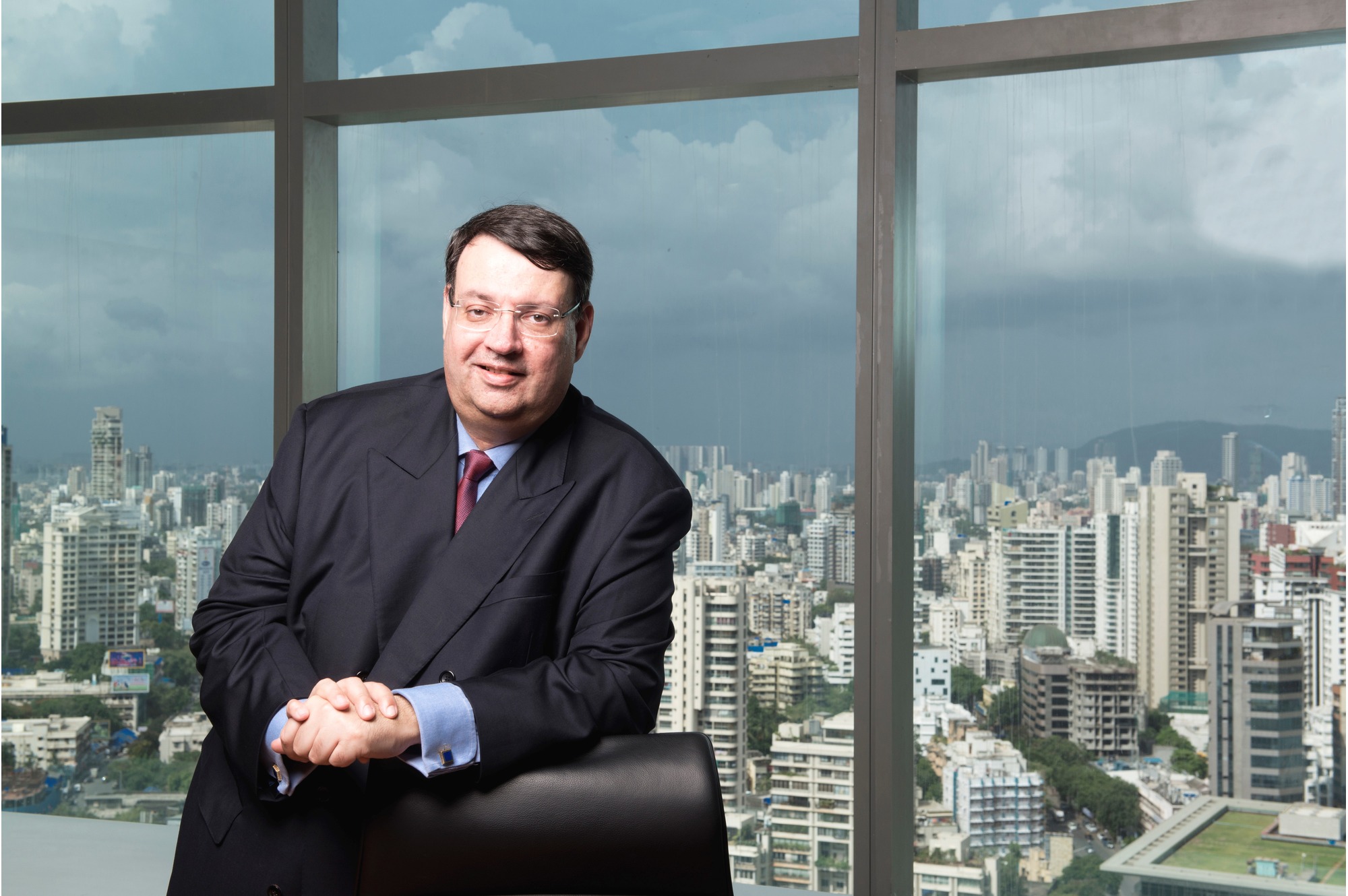Interview: Our expertise lies in enabling every facet of smart building infrastructure, says Robert H K Demann, Executive VP, Siemens India and Smart Infrastructure Head for South Asia
We’re witnessing a noticeable pickup in demand for smart infrastructure in commercial buildings. What are the key drivers behind this growing interest?
Several key drivers are fuelling the growing demand for smart infrastructure in India. Rapid urbanisation is a major one, as increasing migration to cities creates urgent needs for hospitals, schools, housing, airports, and transport hubs – driving demand for smarter, sustainable urban development. Secondly, energy consumption is rising. India’s per capita electricity use is about one-tenth that of developed countries like the US. As India grows economically, energy demand will surge, requiring not only more power generation but also efficient transmission and distribution – areas where smart infrastructure is essential. Third, government initiatives such as ‘Make in India’ and Production Linked Incentive (PLI) schemes are accelerating industrial growth. New industrial corridors, manufacturing hubs, and logistics networks are expanding, but these need robust, intelligent infrastructure to support scaling. Urbanisation, increasing energy needs, and supportive industrial policies are driving strong momentum for smart infrastructure adoption across India.
What sets Siemens’ smart infrastructure solutions apart from competitors in the commercial real estate space?
We focus on everything that makes a building smart, starting with reliable and efficient electrical distribution through advanced low-voltage panels and smart energy management. We integrate access control for security and fire detection systems for safety, areas where Siemens has strong expertise. These form the foundation of smart infrastructure. Beyond that, we offer building automation for centralised control of lighting, HVAC, and energy use, enhanced by AI to optimise operations in real time. Digitalisation is at the core of our smart infrastructure solutions.
A key differentiator is our life-cycle approach, while design and construction account for about 20% of a building’s cost, 80% comes from operations. Using tools like Building Information Modelling (BIM), we help embed sustainability from day one. We also retrofit existing buildings, transforming legacy infrastructure into smart, energy-efficient environments without starting from scratch. What sets Siemens apart is this integrated, future-ready approach that combines security, safety, automation, digitalisation, and sustainability across the entire building life cycle.
What role does Building X play in centralizing building data and driving real-time optimization and energy efficiency?
Building X is the digital intelligence layer of smart infrastructure — essentially the brain of a building. It sits above foundational and automation layers to unify data, enable real-time optimisation, and support holistic building management. Building X integrates modular applications managing key operations such as HVAC, elevators, lighting, energy usage, fire safety, and both physical and cyber security. For clients with multiple properties, Building X offers a Portfolio Manager to monitor and control performance across entire real estate portfolios. It also includes a Sustainability Manager to help reduce carbon emissions and meet ESG goals. A crucial component is the Life Cycle Manager, which connects BIM data with operational insights, creating a digital twin of the building. This enables facilities teams to quickly locate equipment, access documentation, monitor sensors, improve maintenance accuracy, reduce downtime, and support predictive asset management.
Artificial intelligence (AI) enhances the platform by enabling natural language queries and offering data-driven recommendations for maintenance and energy optimisation. The system pulls from sensors, manuals, and logs to suggest intelligent actions through generative AI. Building X is already implemented in sectors like hospitality where it optimises cooling loads to manage energy costs and maintain comfort while extending HVAC equipment life. It also benefits mission-critical environments such as hospitals and data centres, where precise temperature control is essential. In data centres, it balances cooling to avoid equipment failure or energy waste. Ultimately, Building X aims to be the trusted partner for smarter, safer, and more sustainable buildings — whether a single facility or a global real estate portfolio.
How does Siemens approach smart infrastructure across diverse commercial buildings like offices, warehouses, retail, and data centres?
While the foundational needs of all commercial buildings — like electricity, fire safety, and security — are common, the priorities and implementations vary significantly across segments. That’s why Siemens takes a tailored approach to each type of facility. For example, data centres are high-energy consumers and require heightened security, often operating with minimal human presence. Here, energy optimisation and system resilience are paramount. In contrast, hotels prioritise human comfort and health, where factors like indoor air quality and occupant experience take centre stage. Similarly, in pharmaceutical manufacturing, maintaining strict air quality standards is essential to meet regulatory requirements like those from the FDA — a level of environmental control that wouldn’t apply to an office or warehouse. So, while the core technologies are the same, they’re configured and calibrated to meet the specific needs of each building type. Our strength lies in adapting our smart infrastructure solutions to the unique operational context of each client.
Can you elaborate on how Siemens is leveraging IoT, AI and cloud platform to enable smarter and more efficient commercial buildings?
Siemens leverages IoT, AI, and cloud platforms to make both new and existing commercial buildings smarter and more efficient. A prime example is our 50-year-old Kalwa factory, which was retrofitted with sensors and automation technologies to optimise energy consumption, indoor comfort, and maintenance — resulting in over 10% energy savings. The solution, called GAVATAR, aggregates building data across multiple sites, enabling real-time benchmarking and predictive maintenance. What started at Kalwa factory has now scaled globally across Siemens facilities, demonstrating the potential of digital retrofits even in legacy infrastructure. Ideally, such technologies should be integrated during the design phase of a building, as early decisions can significantly influence the 80% operational cost that follows construction. However, as our Kalwa factory shows, existing buildings can also benefit through phased upgrades.
How does Siemens ensure the security and privacy of the data collected from commercial buildings?
Security and privacy at Siemens begin with a “security by design” approach — embedded right from the development of its hardware and software. All products comply with established cybersecurity standards, and edge devices are hardened and upgradeable to prevent tampering. When deployed at customer sites, Siemens implements zero-trust architecture, network segmentation (such as separating IT and OT networks), and virtual LANs for added protection. Remote access, where needed, is protected through multi-factor authentication and time-limited access. Post-deployment, systems are continuously monitored. AI-powered tools help detect anomalies and identify devices needing patches or upgrades. Regular scanning and integration with third-party solutions further enhance security. In essence, cybersecurity is treated as a lifecycle process — from product design to deployment and ongoing operations — ensuring end-to-end protection of building data.
India is a cost-conscious market, and smart infrastructure solutions can add to upfront costs. How does Siemens address these budget concerns while still delivering long-term value to clients?
We design our portfolio to balance affordability with long-term value — not just for India, but also for other cost-conscious markets globally. We’re not only focused on premium solutions; we adapt our offerings to local market conditions. At the same time, regulations — both domestic and international — increasingly demand compliance with fire safety, sustainability, and traceability norms. Automation and smart infrastructure are no longer optional in sectors like pharmaceuticals or export-oriented manufacturing, where digital documentation and energy reporting are mandatory. Take our own Kalwa factory, for instance. We implemented smart infrastructure there not merely as a demonstration of our technology, but because it made strong business sense — leading to a reduction of over 10% in energy costs. For us, any project must present a compelling financial case; if it doesn’t, we choose not to proceed with it.
How does Siemens’ Digital Twin technology enhance predictive maintenance and sustainability?
Siemens’ Digital Twin technology – specifically the Lifecycle Twin used in Building X -creates a virtual replica of a building by integrating BIM data, equipment details, and real-time sensor inputs. This allows facility managers to visualise and monitor assets digitally, enabling predictive maintenance. For instance, if CO₂ levels rise in a space, the system can trace the cause (like a blocked filter), alert maintenance teams, and even guide them step-by-step, reducing downtime and preventing larger failures. This technology is part of Siemens’ broader sustainability approach, guided by its DEGREE framework – which stands for Decarbonisation, Ethics, Governance, Resource efficiency, Equity, and Employability. Within this, Siemens has introduced the EcoTech label, applied to products that exceed industry norms in energy efficiency, reduce carbon footprint across the lifecycle, use recyclable materials, and have longer operational life. Additionally, Siemens focuses on human-centric design – ensuring smart infrastructure solutions are intuitive and easily adoptable. This not only improves operational efficiency and reduces costs but also supports the wider goals of digitalisation and sustainability across new and existing buildings.
How supportive are current Indian regulations or building codes in enabling smart infrastructure?
While national and state building codes exist, it’s often the developers and end customers who drive the adoption of smart infrastructure – especially in urban areas and sectors like global capability centres where operations run 24/7 and reliability is critical. In such cases, it’s less about regulation and more about operational needs and business value. For example, energy efficiency is usually driven by internal targets or external market pressures rather than regulatory mandates. What’s important is to present clear, vertical-specific use cases – like optimising CO₂ levels or ensuring high utilisation of critical hospital equipment – that show tangible benefits. When customers see how these technologies align with their goals, especially if offered through outcome-based models or performance-linked savings, adoption becomes much easier.As technology continues to evolve, which upcoming innovations do you believe will redefine smart infrastructure, and how is Siemens positioning itself to lead that change?
Buildings have evolved from brick and mortar to automation, and now to smart infrastructure. The next frontier is autonomous infrastructure. Take a hospital, for instance: if CO₂ levels rise due to a blocked filter, today a technician is alerted manually. Tomorrow’s buildings will detect, interpret, and act on such issues automatically—creating work orders and dispatching maintenance teams without human intervention. This level of automation is already possible. Another key shift is in energy dynamics. Buildings consume nearly 40% of global energy, so optimising their carbon footprint is vital. Future buildings won’t just consume energy – they’ll produce and store it. For example, rooftop photovoltaic panels, energy-generating glass façades, battery storage systems replacing diesel generators, and electric vehicles integrated with the power grid will all play a role. This integrated model supports decarbonisation, resource efficiency, and human-centric design—core focus areas for Siemens. Cybersecurity is equally critical. As infrastructure becomes more digital, securing systems against threats becomes essential to protect lives and livelihoods.
Looking ahead, 70% of India’s 2050 building stock is yet to be built. With rising demand, integrating autonomous, energy-smart, and secure systems from the start will be key. Siemens is leading this shift – enabling smarter, safer, and more sustainable infrastructure for tomorrow.
Tags
Related Posts
















